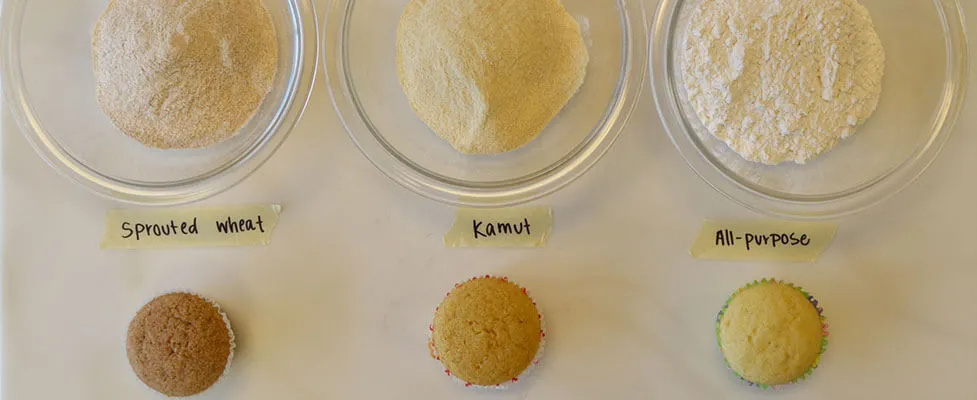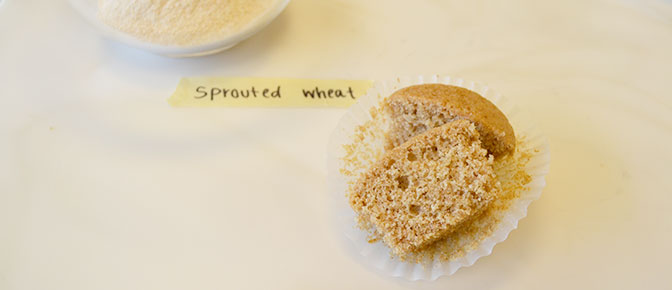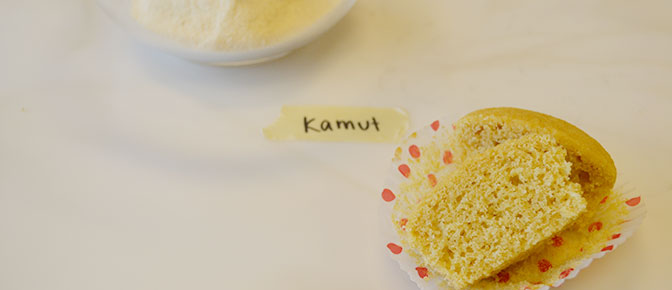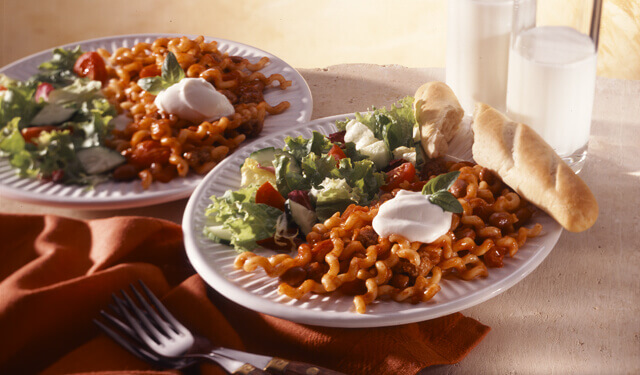

New Way of Baking: Part 2
My journey to find the best alternative flour continues! This week, I have decided to experiment with sprouted wheat flour and kamut Flour. Although these nutrient dense varieties are new to the market, they have not been scientifically proven as “healthier.”
 by
Land O'Lakes Test Kitchen
by
Land O'Lakes Test Kitchen
 by
Land O'Lakes Test Kitchen
by
Land O'Lakes Test Kitchen

My journey to find the best alternative flour continues! This week, I have decided to experiment with sprouted wheat flour and kamut flour. Although these nutrient-dense varieties are new to the market, they haven’t been scientifically proven to be “healthier.” And despite the fact that they’re not gluten-free, their popularity is growing.
Though the potential health benefits of these varieties are still being determined, some people are beginning to experiment with sprouted wheat flour and kamut flour to feel less guilty about reaching for that second dessert.
Experimenting with alternative flours has, in part, stemmed from the perceived “lack” of nutrients in traditional all-purpose flour. Many see all-purpose flour as a source of empty calories, which is not necessarily true. During the milling process, wheat is ground to produce flour. During this time, it’s true that many of the nutrients present in the original wheat are lost. However, the flour is enriched, restoring the wheat’s original nutrients.
Some all-purpose, and more traditional flours are also fortified. This is relevant for those with a gluten intolerance, because most alternative flours have not been enriched or fortified. Many people with these conditions must make sure that they are eating a healthy and balanced diet to ensure that they are receiving nutrients.
Although these wheat varieties are becoming more accessible to the general public, they still have a different flavor and appearance than traditional all-purpose flour. Because gluten is still present in the wheat varieties, these cupcakes have a better structure than the gluten-free 1-to-1 replacements. It is important to note that the cupcakes still varied in appearance, texture, and flavor when compared to all-purpose flour.

The sprouted wheat flour was more similar to whole wheat flour in the sense of graininess and flavor, although it was not the ideal substitute for a cupcake.

The kamut flour had a dry, grainy texture, with an earthy flavor.

Although these two flour varieties were more acceptable than the alternative varieties in my last study, they still do not give all-purpose flour a run for its money.
This experiment is not over; I will continue my quest to find an alternative flour that will viably compete with traditional all-purpose flour! Happy baking, everyone!
Rachel is an intern in the Land O’Lakes Test Kitchens.
Share Your Thoughts
Did you find this article helpful? Has it inspired you? What else would you like to know?



